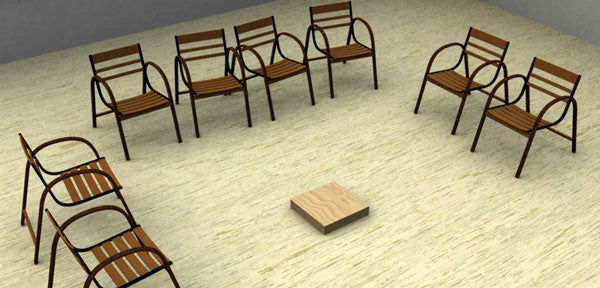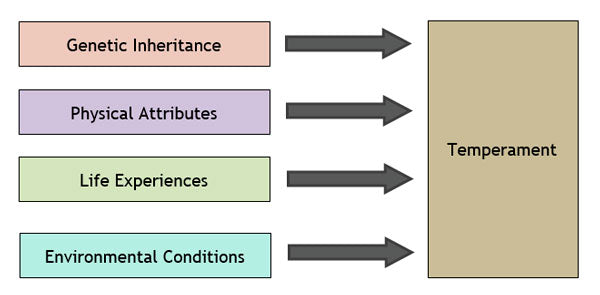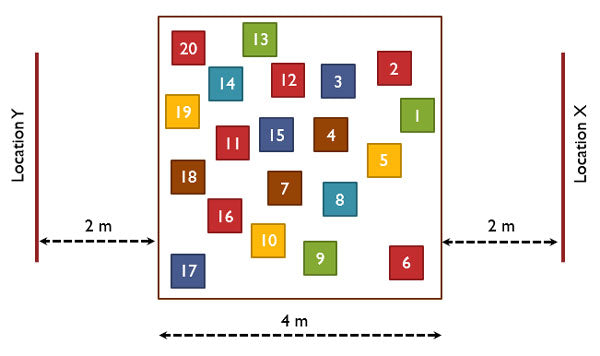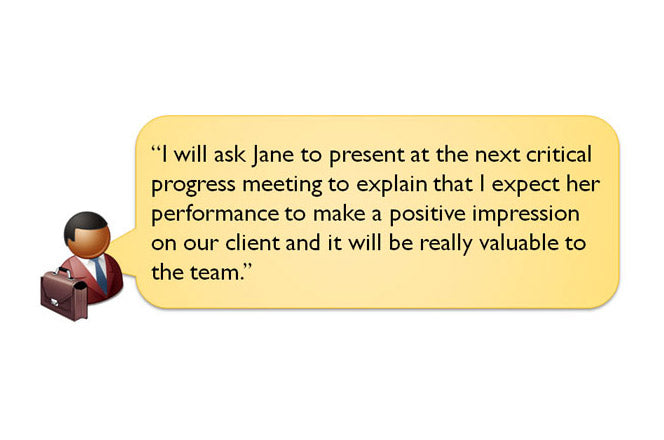Purpose
Many team building exercises focus on getting participants to interact with each other in solving a problem or becoming better at communication. The problems are usually solvable by teamwork, creativity and persistence.
This exercise has a twist on traditional team building exercises. The task is simply too difficult, maybe even impossible. The aim of this exercise is to test the participants on a critical skill; the ability to realise their limitations, ask for help and think out of the box and possibly break traditional rules.
Our culture often demands that people must follow rules, sometimes even blindly. As a result an individual requires a strong self-esteem and confidence to challenge the status-quo or even lead others in a particular cause against the established norm. This exercise is ideal for improving this particular skill.
Objective
The team must stand on a wooden platform using nothing but each other for balance.
What You Need
- A wooden platform 50 cm by 50 cm and about 10 cm high for each group. For group size see below.
- An area where people can safely engage in this exercise.
Setup
- Divide the delegates to groups of 6. You can adjust the difficulty (or impossibility of the task) by using larger groups. In general, the task is always easier for younger participants, so as the age drops you can increase the group size.
- Explain to groups that to complete the task they must stand and balance on the platform using nothing other than each other.
- Allocate 10 minutes.
- Expect the groups to struggle and get frustrated. Don’t suggest anything or provide hints. Let them continue and see if anyone demands props to help them balance or if anyone concludes that the task is “impossible with current rules” or “unfair”.
- If a group succeeds (despite the difficulty), congratulate them and focus the debriefing on good communication skills, teamwork, leadership and determination to finish the task. In case any of the groups succeeded in the task, shift the focus of discussions to teamwork instead. This is because if any group succeeded in the task, you no longer can expect the participants to challenge the rules of this exercise.
- After the allocated time, bring back everyone and continue with a discussion (depending on whether they have succeeded in the task or not) to explain what they went through and what you expected from them.
Timing
Explaining the Exercise: 2 minutes
Activity: 10 minutes
Group Feedback: 10 minutes
Discussion
On teamwork:
How difficult was the task? How do you rate the performance of your team? Was there good communication between the members? Did you nominate a leader? Was the leader effective in managing the team and resources? Was the leader decisive in making decisions or was he easily persuaded by members? Did the leader listen to the concerns of the team members? How did you feel about your performance during the exercise? Where you listened to? How did you feel when you were not heard?
On thinking out of the box (assuming they finished the exercised without solving it, feeling frustrated and without asking for help):
Did you find the task too difficult? If you found the task almost impossible, what did you do about it? Did you question the resources you were given? How did you feel about asking for help? Did you question the rules? How do you feel about breaking the rules? How do you decide if something is impossible to do or not? If you were denied resources, how strongly did you pursue your needs? Did you carry on with the given task irrespective of the impossibility of it or the unfairness of lack of resource you were given to complete it? How good was your team in thinking out of the box? How critical is this skill in the context of your job?
Comments
By ali berry @ Thursday, May 30, 2013 12:16 PM
BRILLIANT! SO IMPORTANT TO REALISE WHEN A SITUATION IS UNTENABLE & STOP THROWING RESOURCES AT IT. OR FIND A WAY TO RE-WRITE THE RULES TO MAKE IT WINNABLE - JUST LIKE CAPTAIN KIRK'S KOBAYASHI MARU TEST.
It’s a Starfleet Academy simulator that is impossible to beat; the intended purpose of the test is to see how a potential captain deals with defeat and death. In the entire history of Starfleet only one cadet has ever actually bested the unbeatable test, and it was a young James Kirk. Eventually it’s revealed: Kirk changed the program.
It’s important to understand how Kirk approached the test - he thought it was fundamentally unfair. To Kirk the Kobayashi Maru itself was cheating. He believed the idea ofan unwinnable scenario to be ludicrous; as he saw the world, any problem could be overcome eventually with smarts and hard work. The equivalent here was being given a math test with the problem “2+2=?” and being told that "4" was the wrong answer.
The test was the problem, and Kirk solved that problem. Kirk didn’t hack the Kobayashi Maru to win, but rather to make it winnable. When Saavik accuses Kirk of cheating, he replies “I changed the conditions of the test!”
Soft Skills Training Materials
Get downloadable training materials
Online Train the Trainer Course:
Core Skills
Learn How to Become the Best Trainer in Your Field
All Tags
Training Resources for You

Course Design Strategy
Available as paperback and ebook

Free Training Resources
Download a free comprehensive training package including training guidelines, soft skills training activities, assessment forms and useful training resources that you can use to enhance your courses.

Our Comprehensive Guide to Body Language

Train the Trainer Resources
Get Insights - Read Guides and Books - Attend Courses
Training Materials
Get downloadable training materials on: Management Training, Personal Development, Interpersonal Development, Human Resources, and Sales & Marketing














Leave a comment
All comments are moderated before being published.
This site is protected by hCaptcha and the hCaptcha Privacy Policy and Terms of Service apply.